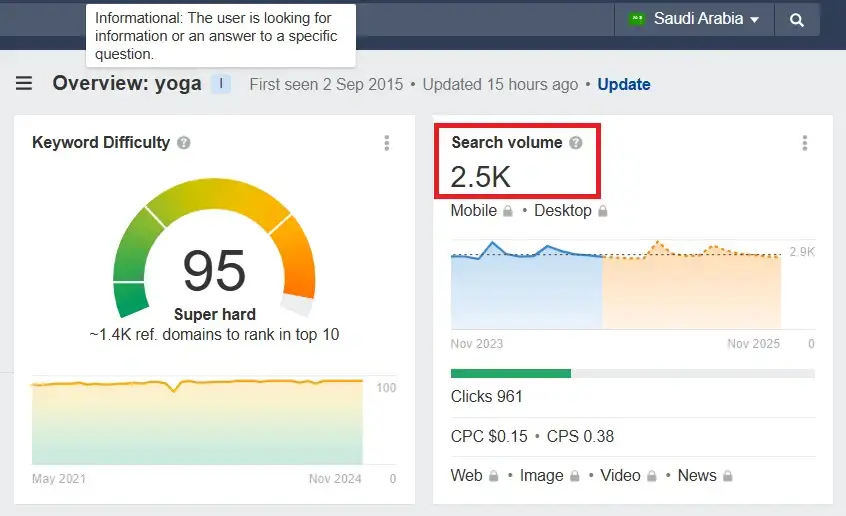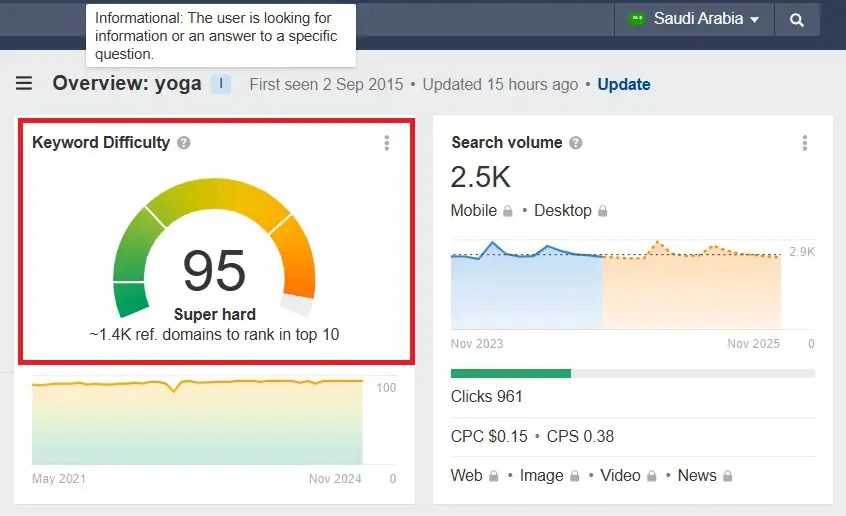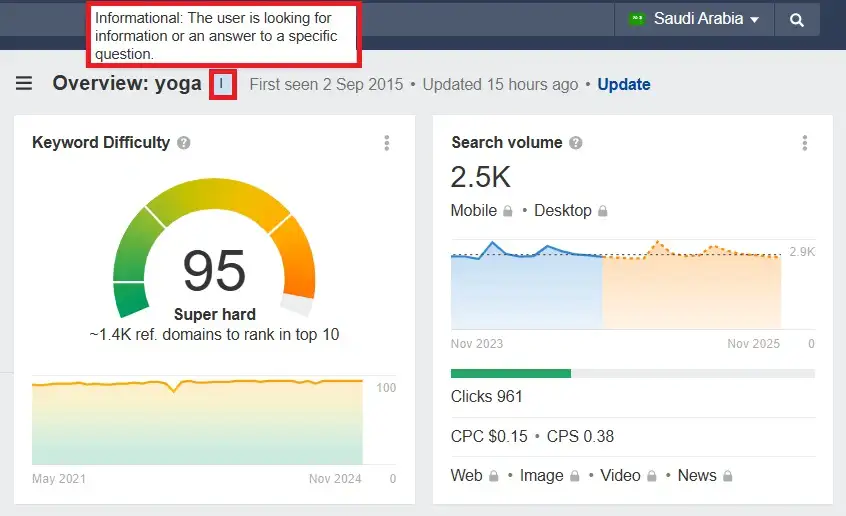So, what are three key considerations when evaluating keywords for search engine optimisation? Volume, competition and user intent are the 3 most important aspects when picking keywords for search engine optimization. You can also call it Frequency, competition, and relevance. Since SEO is an important online marketing tool, it’s important for you to learn how to use it to reach your target audience. This will help you to drive conversions and also with business growth. After reading this blog, you will understand which keywords are best to target in SEO.
Read: The Basic SEO Tutorial – Making SEO Easy For Everyone
Why Does SEO Matter?
With all the automation tools and AI available out there, you must work manually on SEO to make it work well. That’s why it’s important to hire SEO specialists who know what they’re doing. When building an online presence, bringing visitors to your website is essential. A major way to do this is by focusing on organic traffic, which means attracting users through unpaid search results on search engines like Google. This kind of traffic includes people who search for product or service keywords.
And when choosing keywords, the three considerations are how many people search for them, how hard it is to compete with others using them, and what people are really looking for. We call them Volume, competition and user intent. Now that you know what are three key considerations when evaluating keywords for search engine optimisation, let’s talk keywords can be analyzed by what factors. We will discuss practical examples to make you understand the concepts well.
1) Search Volume (Frequency)
What is Search Volume?
When evaluating keywords for search engine optimisation, keeping in mind search volume is important. It is the average number of times a keyword is searched for in a month. High search volume means more people are interested in a topic. Low search volume indicates a more niche interest.
Keyword digital marketing tips likely have a high search volume because many people want advice on this topic. But the keyword digital marketing tips for local restaurants might have a lower search volume because it appeals to a specific audience.
Why Search Volume Matters?
High-volume keywords attract more visitors, but they’re often very competitive. It means that many websites target them. Lower-volume keywords might bring in fewer visitors but can be easier to rank for, especially if your site is new or in a specific niche. If you’re a personal trainer just starting out, ranking for fitness tips could be challenging due to high competition. But using a lower-volume, targeted keyword like fitness tips for busy moms can attract a specific audience and increase your chances of ranking.
Balancing High and Low-Volume Keywords
Using both high- and low-volume keywords can help you attract a range of visitors. High-volume keywords bring in broad traffic. Lower-volume keywords for search engine optimization attract people with specific needs, leading to a better chance of engagement or conversion. Targeting a keyword skincare tips may attract general interest, while skincare tips for sensitive skin targets users who are actively looking for specific solutions. It increases the likelihood that they’ll engage with your content or make a purchase.
Practical Example
Suppose you own a yoga studio. Targeting yoga (high search volume) may be too broad, with a lot of competition. Instead, you could try a mix of keywords like beginner yoga for stress relief and yoga studio in [your city], which have lower search volumes but target people who are closer to making a decision or booking a class.
Read: 5 Non Technical SEO Basics You Need to Master
2) Competition (Keyword Difficulty)
What is Keyword Competition?
Another thing to keep in mind when evaluating keywords for search engine optimisation is Keyword competition. It measures how difficult it is to rank for a keyword. High-competition keywords are targeted by many websites. Low-competition keywords have fewer sites aiming for the top search spots, giving smaller or newer sites a better chance.
The keyword home decor ideas is highly competitive. It’s a popular keyword used by many websites. The keyword home decor ideas for small apartments may have lower competition because it’s more targeted.
Tools to Assess Keyword Competition
Google Keyword Planner, SEMrush, and Moz are the best tools that show you the level of competition for each keyword along with other important details. These tools provide a score from 0 to 100. Higher scores means more competition. If the keyword healthy recipes on SEMrush shows a competition score of 85 for this keyword, it’s very competitive. But a keyword like healthy recipes with quinoa might have a score of 40. This makes it easier for a new blog or website to rank for.
Competitor Analysis
To assess keyword competition effectively, look at the websites that currently rank well for your chosen keyword. If the top-ranking sites have high authority (like many backlinks and high-quality content), it may be difficult to outrank them. If you want to rank for affordable pet care, check the top-ranking websites. If they include high-authority pet care brands, consider targeting a variation like affordable pet care for small dogs, which have lower competition.
Using Low-Competition Keywords to Your Advantage
For newer websites, low-competition keywords can be a faster path to attracting visitors. These keywords allow you to capture a specific audience without competing with well-established sites. Instead of using a keyword like tax planning, which is broad and competitive, try tax planning tips for freelancers or tax deductions for small business owners. These keywords are more specific. They can attract relevant traffic without as much competition.
Read: How To Do SEO For Your Images
3) User Intent (Relevance)
What is User Intent?
The third thing to keep in mind when evaluating keywords for search engine optimisation is their relevancy. User intent or relevance of keywords describes the purpose behind a search. Understanding user intent helps you create content that meets the user’s specific needs. There are four main types of user intent:
Informational Intent: The user wants to learn something.
Example: “How to start a blog” or “What are the benefits of meditation?”
Navigational Intent: The user is looking for a specific website or brand.
Example: “YouTube login” or “Nike running shoes.”
Transactional Intent: The user is ready to buy.
Example: “Buy noise-canceling headphones” or “Order pizza online.”
Commercial Intent: The user is researching before making a purchase.
Example: “Best laptop for graphic design” or “Top-rated SUVs.”
Identifying User Intent in Keywords
Certain keywords hint at what the user wants to do. Words like how to or tips indicate informational intent, while buy, cheap, or discount suggest transactional intent.
For instance, a search for best winter jackets suggests commercial intent, as the user is looking for recommendations. On the flip side of the coin, how to choose the right winter jacket shows informational intent, with the user seeking guidance rather than buying immediately.
Tailoring Content to User Intent
By creating content that aligns with user intent, you engage visitors and improve your chances of ranking well. If a keyword has informational intent, produce detailed guides or articles. For transactional keywords, make it easy for users to complete a purchase. If you target best organic skincare products, create a guide with recommendations to cater to users with commercial intent. For how to make organic skincare products at home, focus on an informational article with DIY recipes to attract users looking to learn.
So, which keywords are best to target in SEO?
It’s important to know what are three key considerations when evaluating keywords for search engine optimisation. But understanding the concepts of search volume, competition, and user intent is equally essential for effective keyword evaluation. One of the most important key points to remember is that long-tail keywords significantly improve your SEO strategy. These longer, more specific phrases not only help you target niche audiences but also allow you to compete effectively in a crowded digital landscape. By focusing on long-tail keywords, you can attract highly targeted traffic that is more likely to convert, as these keywords often align closely with users’ specific needs and intentions.
Long-Tail Keywords for Niche Targeting
Long-tail keywords are longer, more specific phrases that often reflect niche topics or specific needs. Although they have lower search volume, long-tail keywords attract highly targeted traffic and are less competitive. For instance, instead of targeting smartphone, which is competitive and broad, consider a long-tail keyword like best budget smartphone for photography. This targets users with a specific interest, increasing the likelihood of engagement and conversion.
Read: How To Do Technical SEO for WordPress
Reach Out to First Growth Agency
Now you know in detail what are three key considerations when evaluating keywords for search engine optimisation. Whether you are ranking for product or service keywords, knowing about search volume, competition, and user intent is very important. High search volume means many people are searching for those words, but they can also be very competitive.
By using a mix of high and low-volume keywords, you can reach a wider audience. Matching your content to what users really want helps you meet their needs, whether they’re looking for information or ready to buy. First Growth Agency can help you with that. By focusing on these key points, we make your website easier to find and attract more visitors. This will help grow your business.



